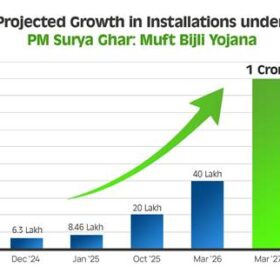PM Surya Ghar: Muft Bijli Yojana turns one
The PM Surya Ghar: Muft Bijli Yojana, the world’s largest domestic rooftop solar initiative, is reshaping India’s energy landscape with a bold vision to supply solar power to one crore households by March 2027.
China polysilicon price rebound nears its limit
In a new weekly update for pv magazine, OPIS, a Dow Jones company, provides a quick look at the main price trends in the global PV industry.
Meeting sustainability goals: How overlooking EPR responsibilities can lead to costly consequences
Many countries require companies to show that they comply with environmental standards before accepting imports. The EU’s Packaging and Packaging Waste Directive sets the strictest recycling and waste disposal requirements, making non-compliance an obstacle to entry into the market. Companies that don’t adhere to these standards could struggle to grow internationally.
Union Budget 2025: A bright future for India’s solar industry
With climate change and energy security at the forefront of global concerns, the government has unveiled a series of policy measures and incentives designed to accelerate the adoption of solar power.
Global solar module prices mixed on differing demand outlook
In a new weekly update for pv magazine, OPIS, a Dow Jones company, provides a quick look at the main price trends in the global PV industry.
Budget 2025 expectations of the Indian renewable energy industry
Regulatory and fiscal incentives to set up specialized labs in collaboration with leading international and domestic research institutions, reduction of Goods and Services Tax (GST) on turbines and solar modules, and ISTS charges waiver extension are on the budget wishlist of the renewable energy industry in India.
Union Budget 2025: Expectations of India’s solar industry
With the Union Budget 2025-26 approaching, the solar industry anticipates key policy and financial measures to sustain this momentum. The budget is expected to increase funding for green technologies, including solar, wind, and green hydrogen.
A budget boost for solar power could reshape india’s energy and agricultural landscape
Central Government’s Pradhan Mantri Kisan Urja Suraksha Evam Utthaan Mahabhiyan (PM-KUSUM) scheme holds transformative potential for both India’s agricultural and energy sectors. Decisive financial boosts in the 2025 budgets will harness the growing winds of interest and pave the way for widespread adoption.
Top 5 global inverter trends to watch in 2025
Challenges and innovations drive solar and energy storage inverter industry forward in 2025.
Solar wafer price rebound nears its limit
In a new weekly update for pv magazine, OPIS, a Dow Jones company, provides a quick look at the main price trends in the global PV industry.















